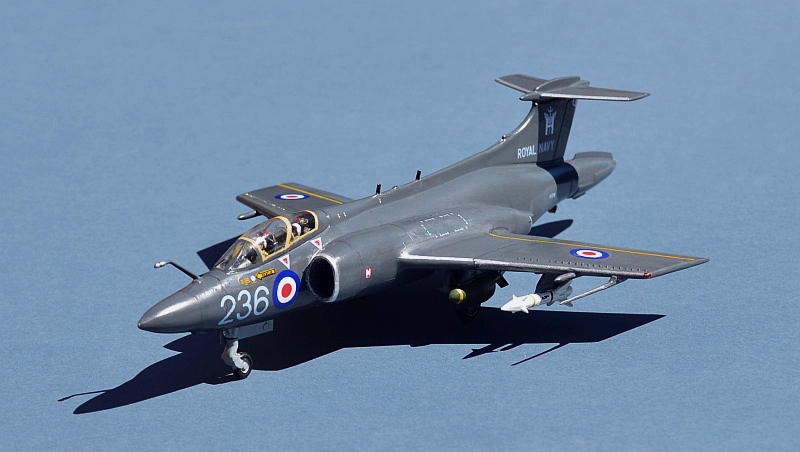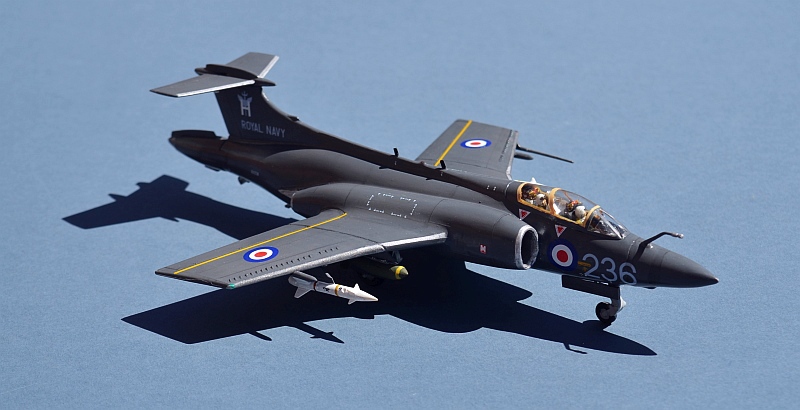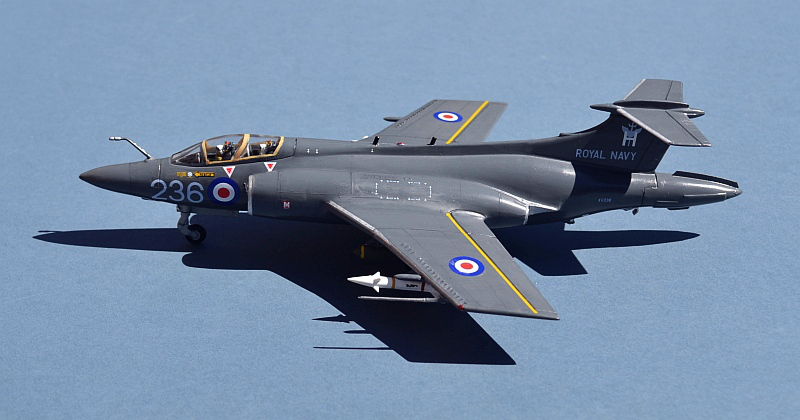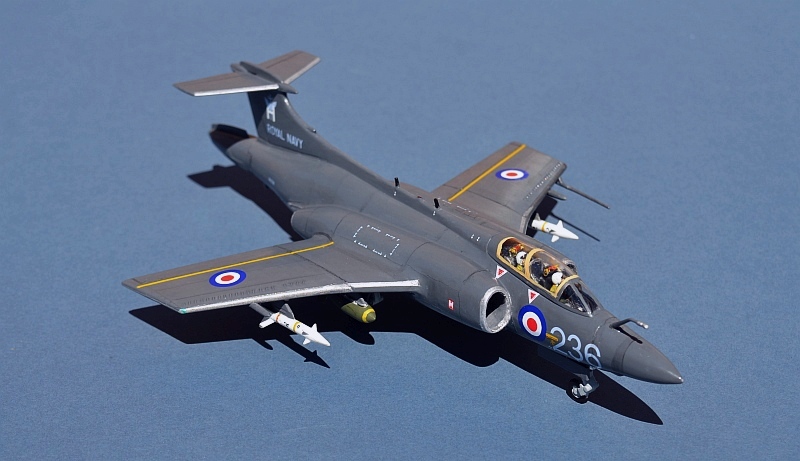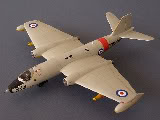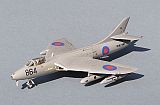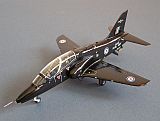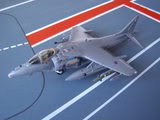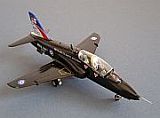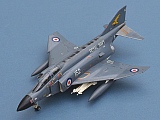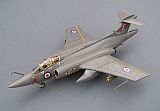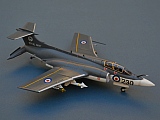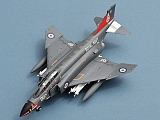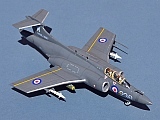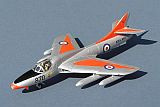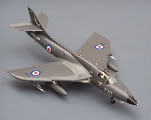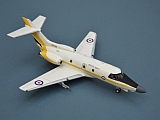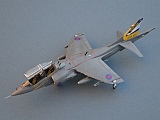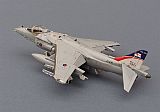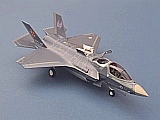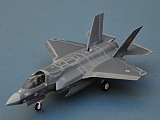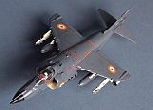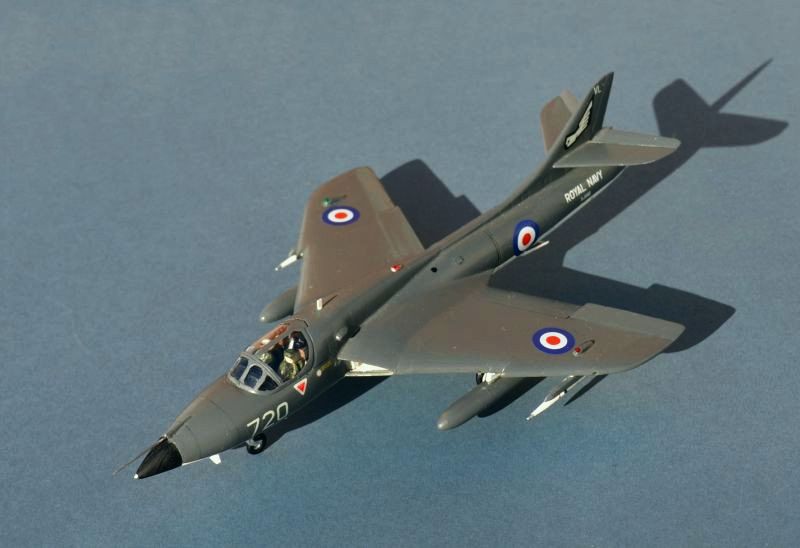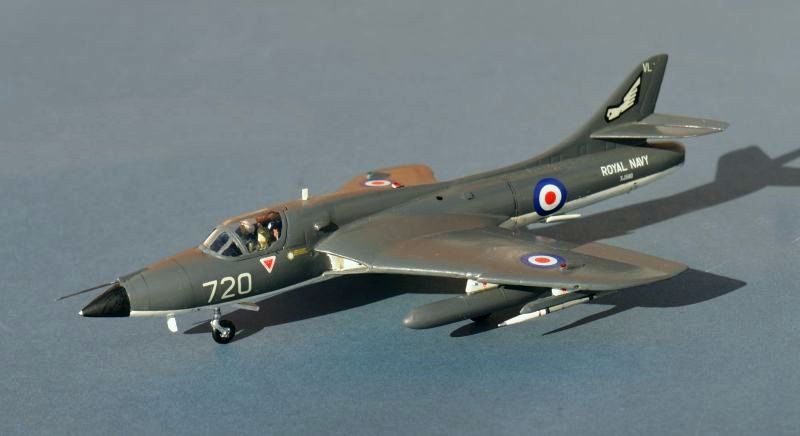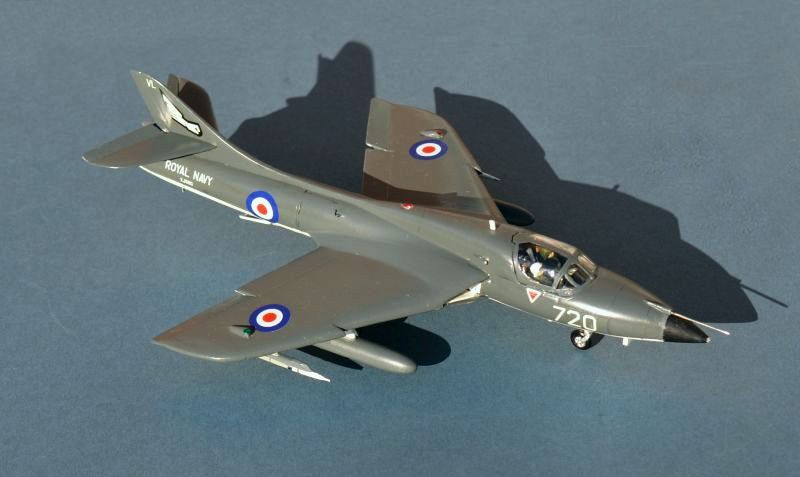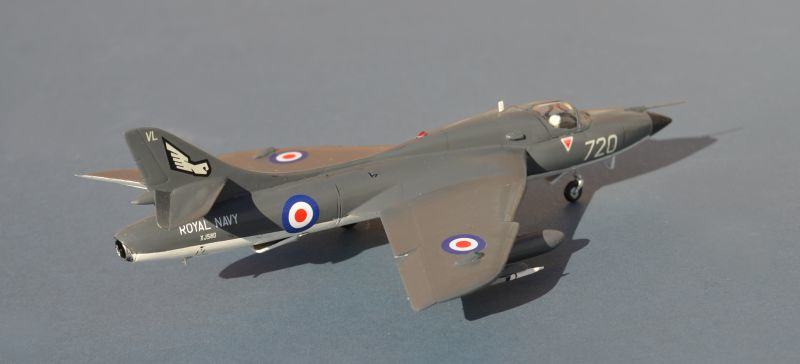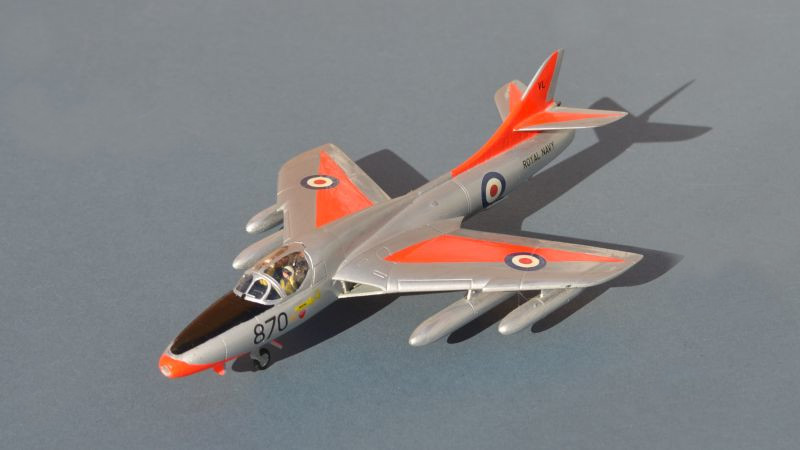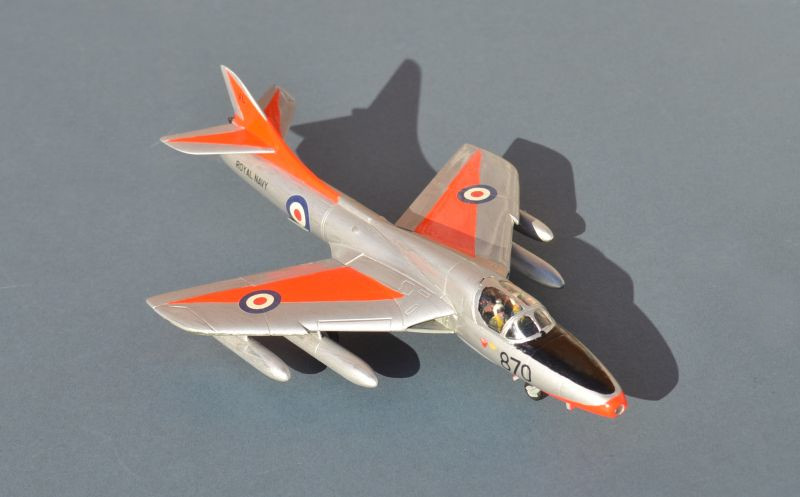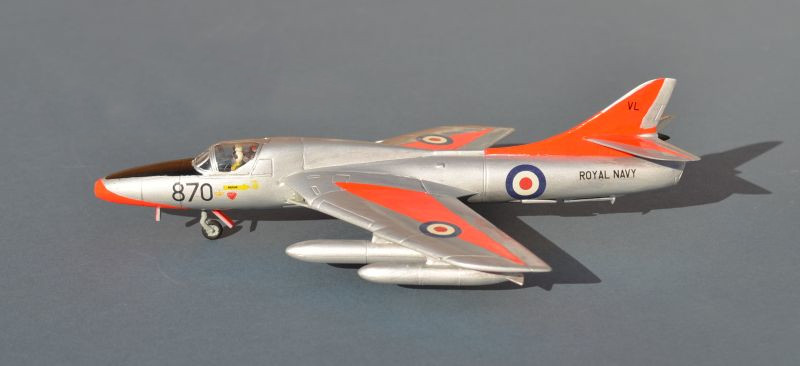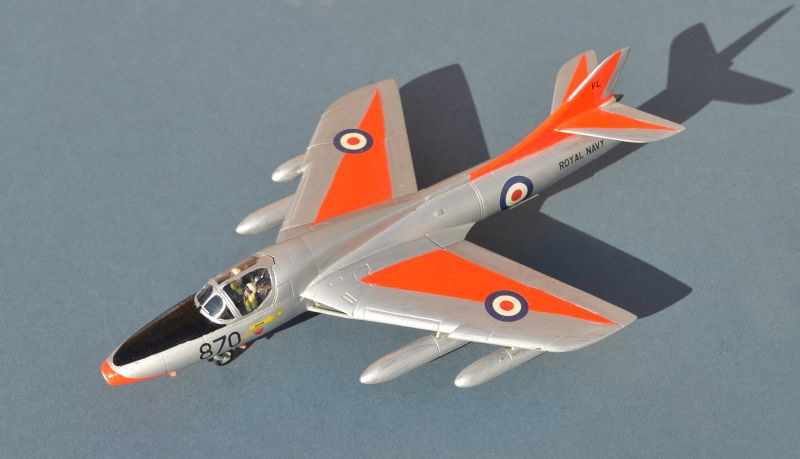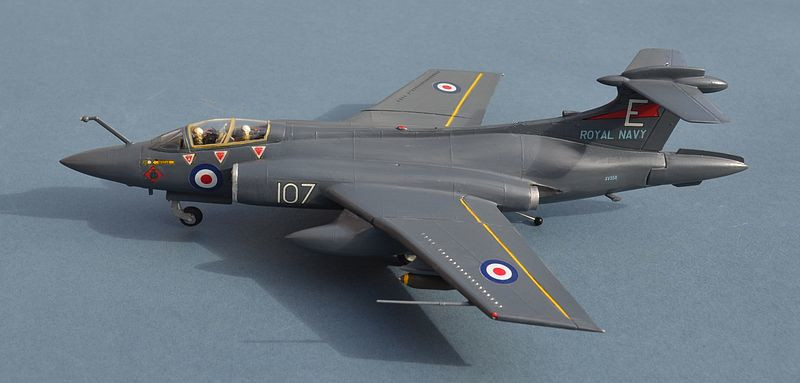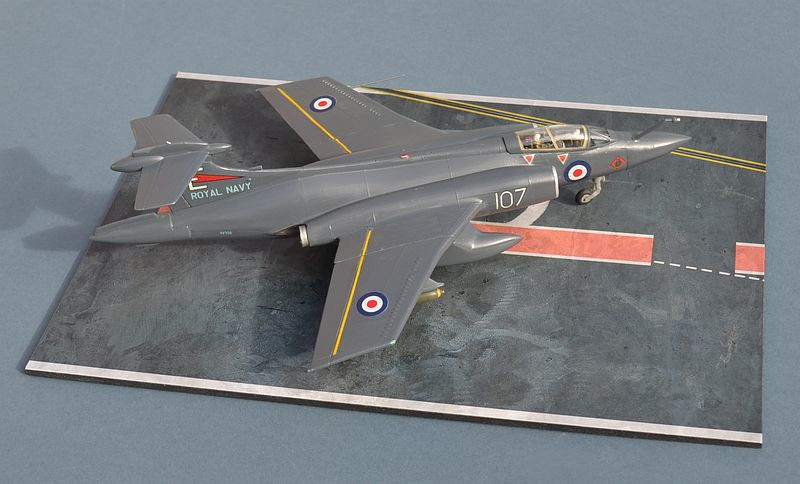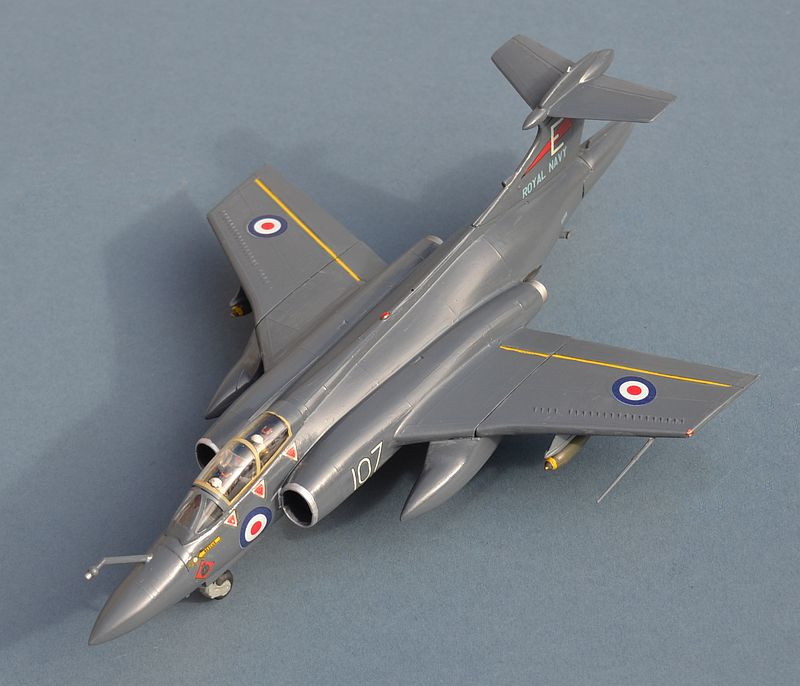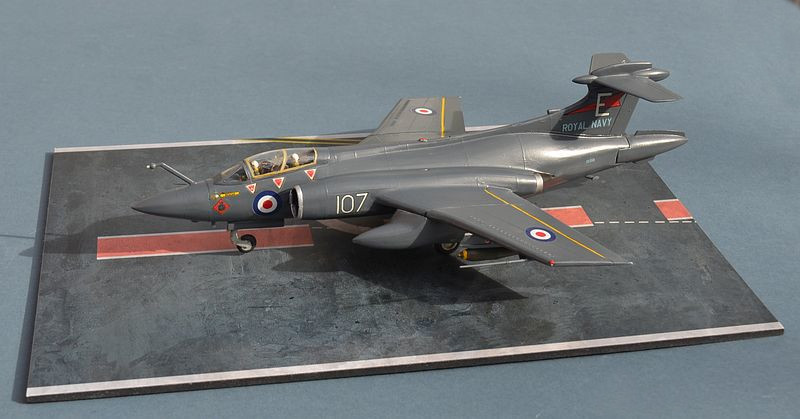Royal Navy Jets -
Return to Fred's Models main index
Click on the thumbnail to go directly to the individual aircraft models, or simply scroll down
BAe/Boeing Harrier GR.9 -
Naval Strike Wing (800/809 Sqns), HMS ILLUSTRIOUS, 2009
Airfix, with Model Alliance decals
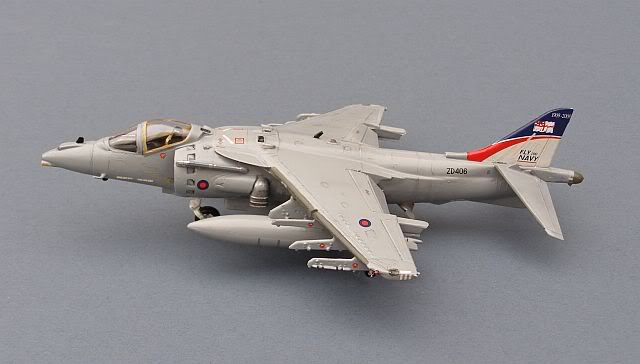
For the 100th Anniversary of British Naval Aviation, one of the Naval Strike Wing's GR.9 aircraft was painted up in anniversary markings. In addition to its "Fly Navy 100" tail, the aircraft sports the latest overall Medium Sea Grey colour scheme, which is believed to be more appropriate for current operations in Afghanistan.
This is an Airfix GR7 with the Heritage 100% LERX and Model Alliance decals. The
Airfix Harrier II is, in my opinion, the best all round 1/72 AV-
The RN reluctantly gave up its FA2 Sea Harriers in 2006; the FA2's payload limitations in hot conditions had become very apparent in the Gulf and Balkans and the cost of upgrading the Pegasus engines to overcome this was unaffordable (similar issues affected the RAF's GR7 fleet).
Instead, the RAF and RN Harrier forces were combined on a single upgraded aircraft
type under "Joint Force Harrier", with 2 RN Squadrons and 2 RAF Squadrons operating
the GR7, GR7A and more recently, the upgraded GR9, with its improved engine and precision
weapons capabilities (primarily Brimstone, Maverick and advanced Paveway LGBs). However,
with the GR9's minimal air to air capability, this change left the Fleet without
an effective air defence force; a vulnerability that continued until the entry into
service of the F-
Royal Navy pilots of 800 Naval Air Sqn, flying pooled JFH GR7As, spent much of late 2006 and early 2007 in Afghanistan, providing close support to UK & NATO ground forces on Operation HERRICK. They returned to Afghanistan on several occasions since then, combined with elements of 801 Naval Air Sqn, as the "Naval Strike Wing".
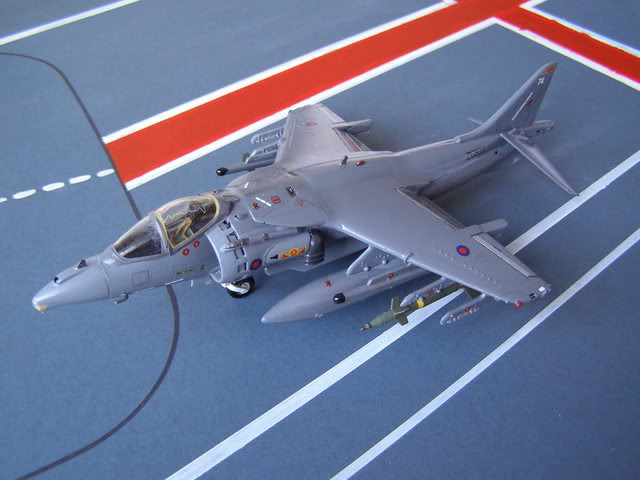
See the separate Sea Harrier Pages for details of my Sea Harrier and T-
BAe Hawk T.1 -
Like the Hunters before them, the RN acquired its Hawk T.1s at minimal cost from surplus RAF stocks.
Flown mainly by FRADU pilots, they were a familiar sight over the south western skies, especially during the weekly FOST "Thursday War" off Plymouth. The Hawk is far smaller than the Hunter and noticeably more difficult to spot at sea (visually and on radar), adding a greater element of realism to training exercises. Several aircraft also operated from RNAS Yeovilton for use as Fixed Wing Standards trainers for RN pilots.
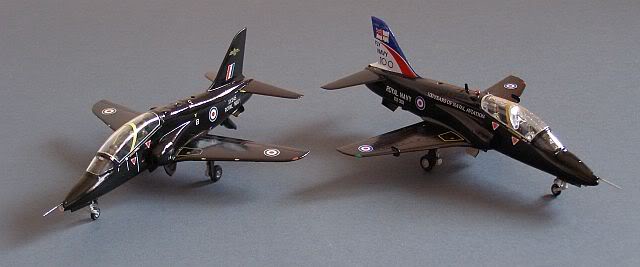
In 2009, several Royal Navy Hawk aircraft were painted in a special display scheme to commemorate 100 years of Naval Aviation.
This is the Italeri Hawk 100 with a fair amount of surgery to convert it back to a T.1. The marvellous Fly Navy 100 decals come from Alley Cat.
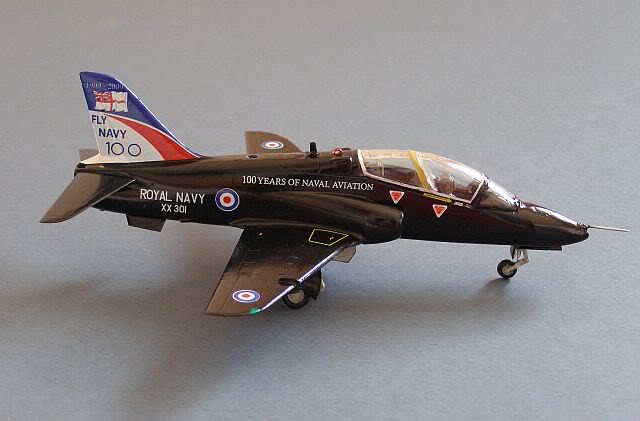
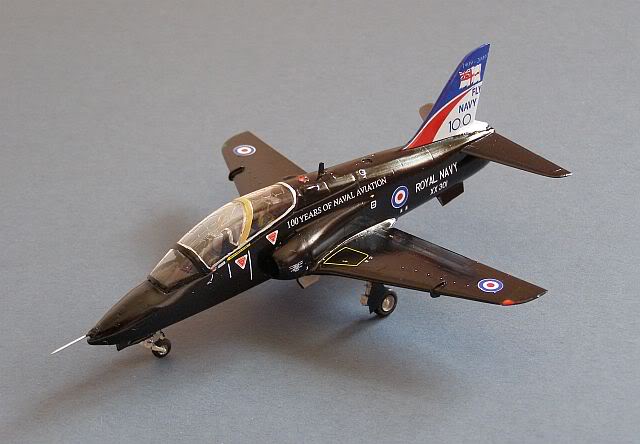
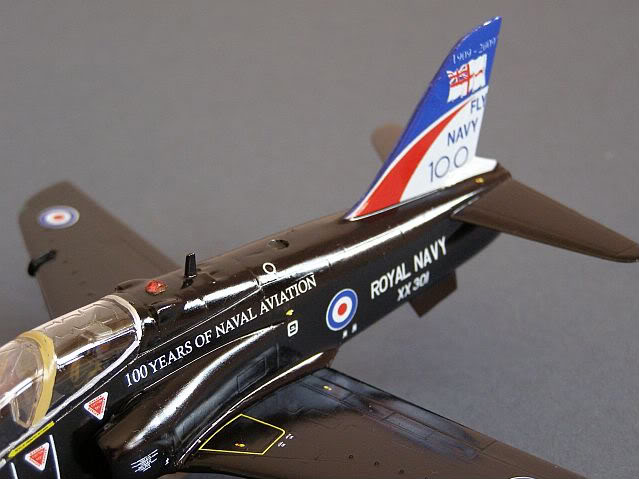
.....and the real thing at Yeovilton:
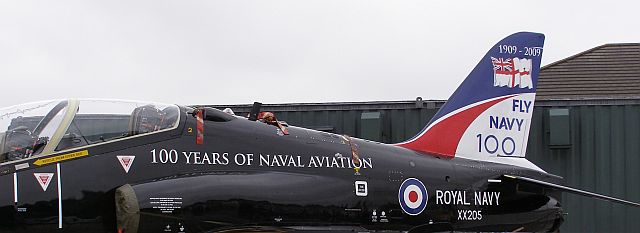
This is an Airfix Hawk I built back in the 1980s, now repainted as a RN aircraft, using Model Art's excellent decals. Always an elegant and balanced looking aircraft, the gloss black scheme suits it well.
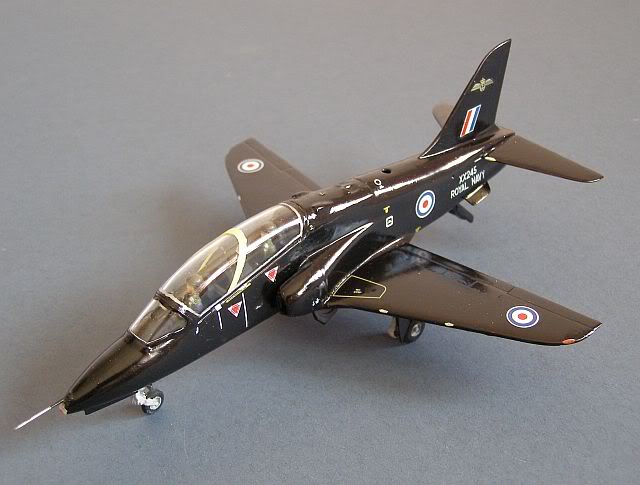
.....and the real thing at Yeovilton:
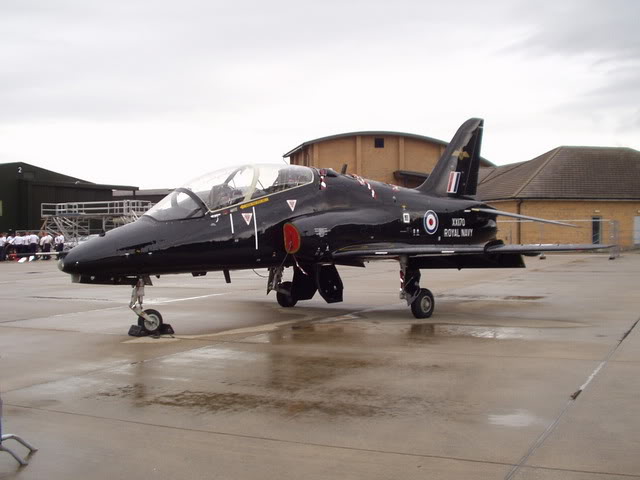
The old Airfix Canberra B.2 kit had some significant nose shape issues, and the mould
was irrevocably converted into a tandem seat Martin B-
The RN obtained nine TT.18 Canberra Target Tugs in the early 1970s, for use by the
FRADU organisation. All were ex-
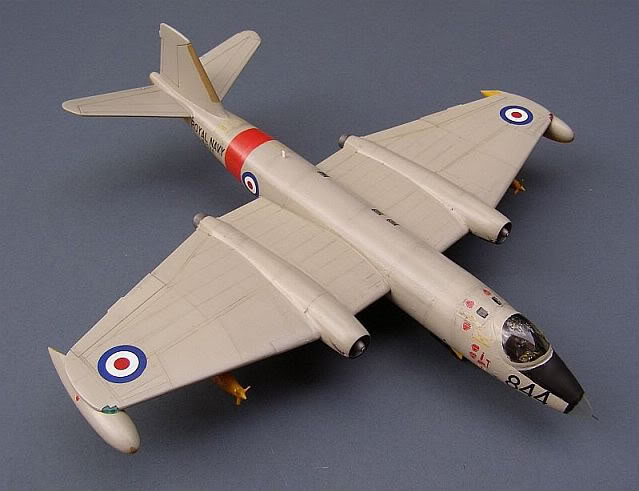
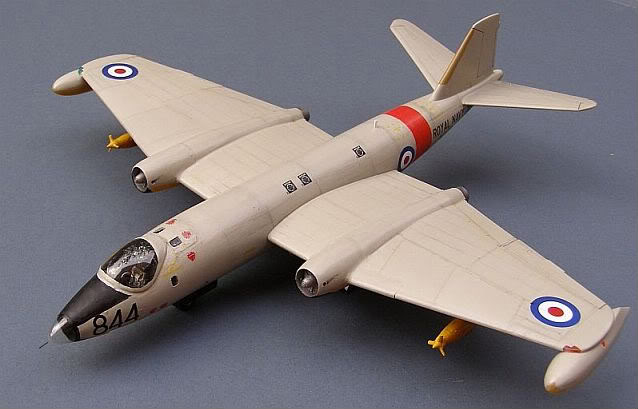
With tow wires up to half a mile long, it was necessary to clear a large area of airspace for the Canberra to fly a racetrack over a ship for live firing practice or radar tracking and alignment. Canberras regularly deployed to places such as Gibraltar, to take advantage of the fine weather for gunnery and missile shoots.
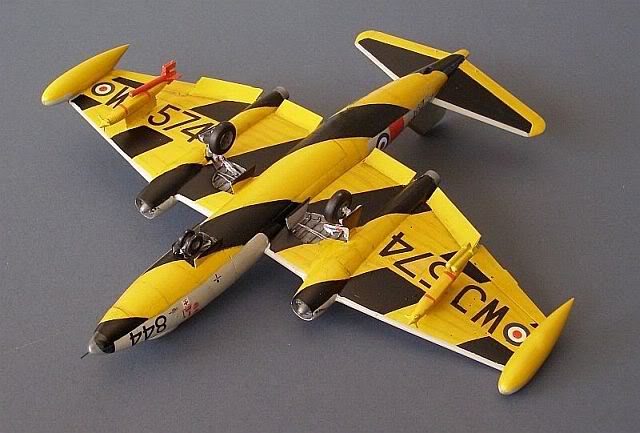
FRADU also operated seven T.22 Canberras, converted from ex-
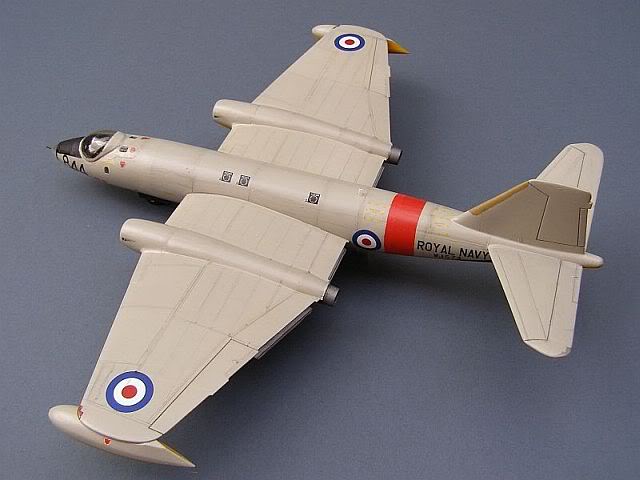
Royal Navy Canberras were all withdrawn from service in 1992.
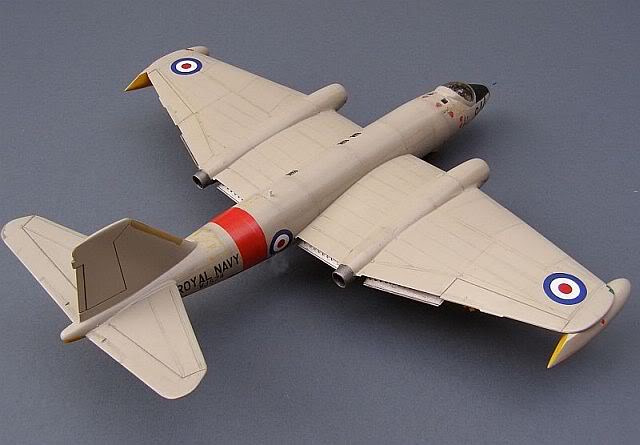
The aircraft that I have depicted with this model began its life as a B.2 with the RAF, on charge with 540 Sqn at RAF Wyton. This Squadron was assigned a number of sensitive roles, and some sources suggest that this particular aircraft was one of several specially converted Canberras used in 1953 to conduct secret intelligence gathering flights over the Soviet Union.
This is the Phabulous Phujimi (Fujimi) British F-
Phantoms of the FAA, in the form of 892 NAS based on HMS ARK ROYAL were the pinnacle
of British Naval Air Power before the entry into service of the F-
The Blackburn/Hawker Siddeley Buccaneer
The Airfix Buccaneer started life as the NA39 Buccaneer 1 prototype, subsequently
released as the early S1 version (link to my S.1 Buccaneer). The rather crude mould
was reworked and re-
The Buccaneer remains one of the best British combat aircraft ever produced. Originally optimised for low level naval attack missions, including nuclear strike, it served faithfully with the RN and RAF for many years but only saw combat in its last few months of service, as a target designator and LGB attack aircraft with the RAF, during Operation Granby (Gulf War 1).
FROG also produced a Buccaneer kit and in some ways this is the better of the two. This one has seen a few modifications, some added photo etch and scratch sprue detail, plus Modeldecal markings for an aircraft of 801 Sqn onboard HMS VICTORIOUS. (Link to build Page)
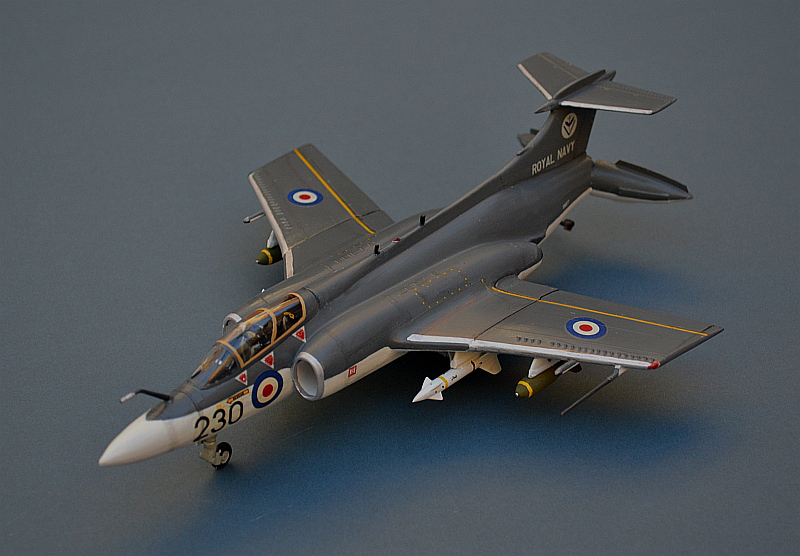
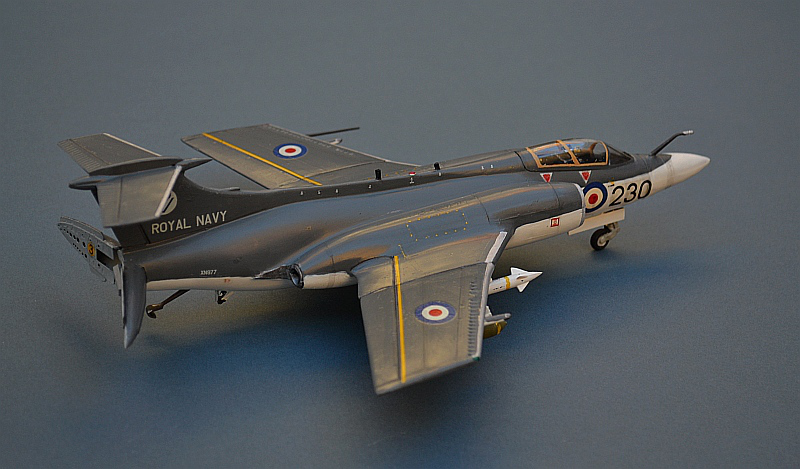
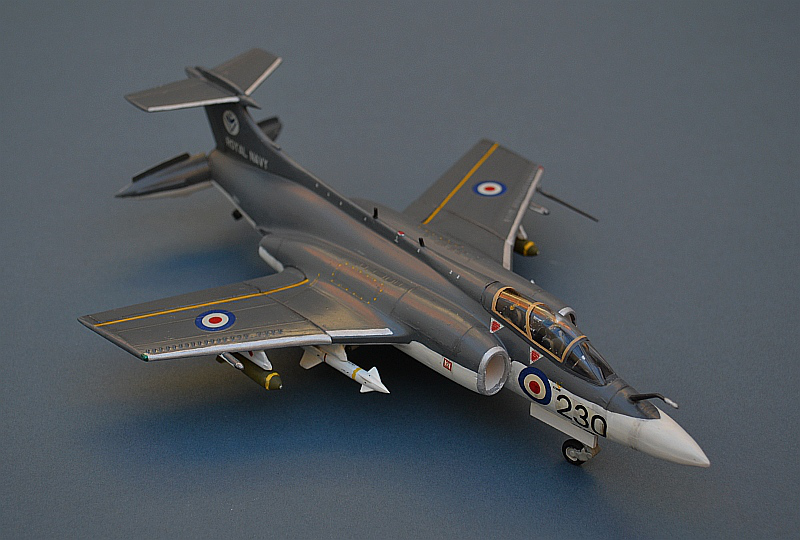
Hawker Hunter (single and two seat variants)
The Airfix FGA9 Hunter isn't a bad kit, although the recent Revell issues have far eclipsed it. This one has been converted into a GA11 by a number of simple modifications of nose and tail.
The RN acquired most of its GA11 Hunters at minimal cost from ex-
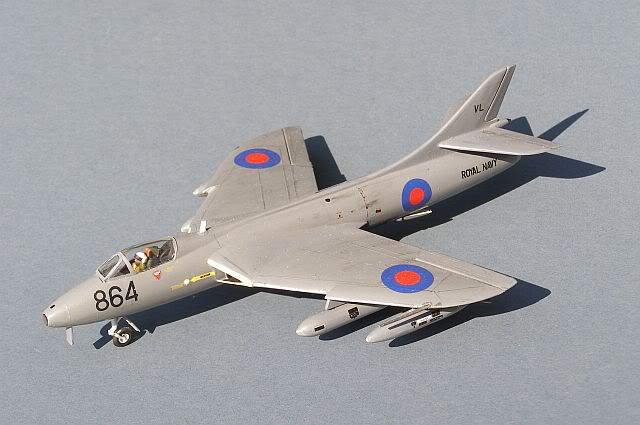
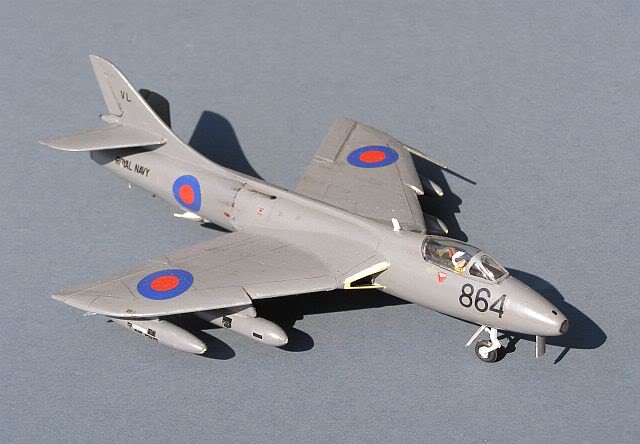
.....the real thing at Yeovilton:
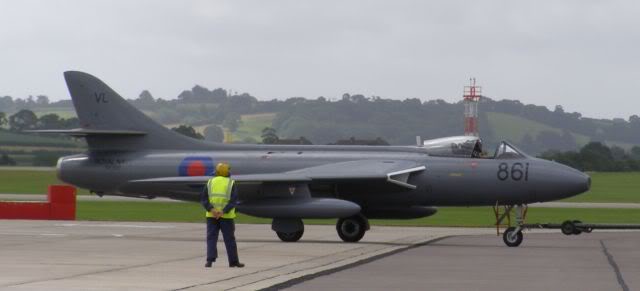
Until recently, Matchbox's twin seat Hunter was the only kit of this Hunter variant available. As with all Matchbox kits, it builds up nicely, but is not the most accurate or finely detailed example of moulding technology. This kit has been converted into a RN T8C by modifying the nose to represent the large spotlight used for tracking test runs.
The RN acquired most of its T8 twin seat Hunters at the same time as its GA11s. As
with the single seater, they were initially used to train RN pilots, then passed
on to the FRADU organisation. Flown by highly skilled (and often dare-
Another conversion of the Matchbox twin-
Perhaps the ultimate Hunter development, two naval T8s, XL602 and XL603, were modified by British Aerospace and Ferranti as flying test beds for the Sea Harrier's Blue Fox radar and weapons system. They subsequently entered service with 899 NAS (Sea Harrier HQ Squadron) as 2 seat radar and air combat trainers, remaining in service at Yeovilton until the late 1980s.
This is the Fujimi F-
The F-
All 4 squadrons will be capable of operating from the RN’s aircraft carriers, HMS QUEEN ELIZABETH and PRINCE OF WALES.
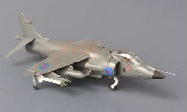
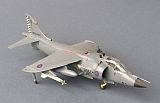
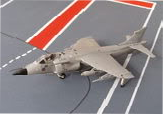
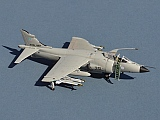
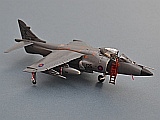
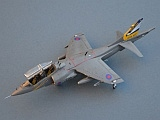
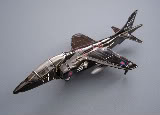
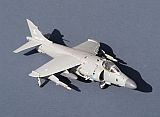
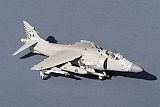
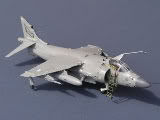
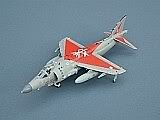
Another Fujimi F-
The First two phases of UK Royal Navy F-
Aircraft and personnel from the joint F-
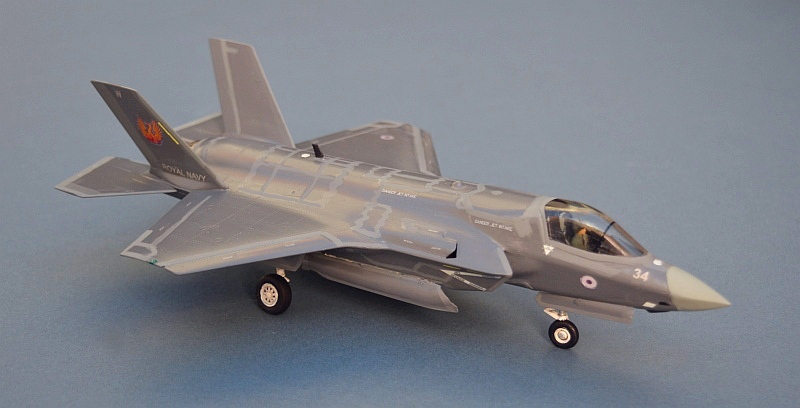
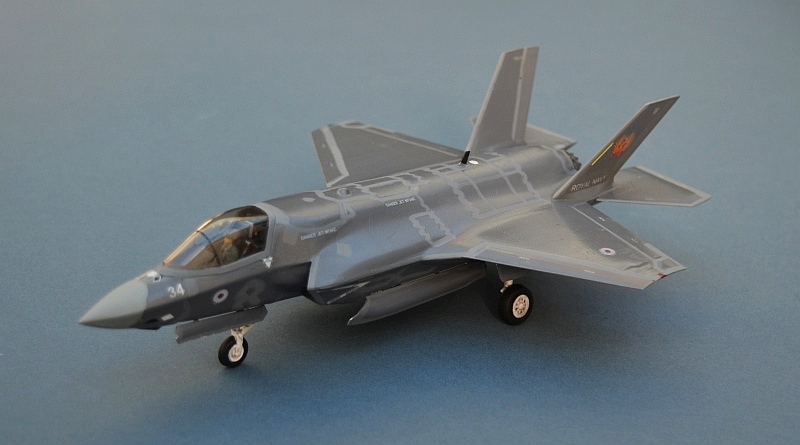
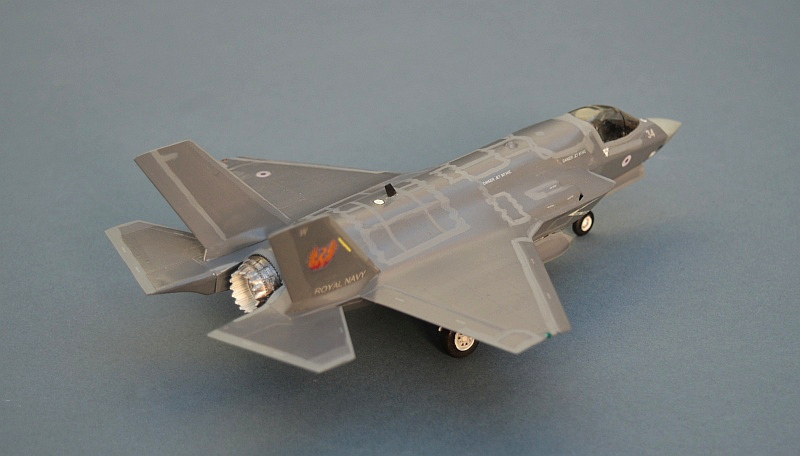
The old Matchbox 125 CC.2 kit makes and ideal basis for the FA2 radar trials aircraft Link to Build Page
The HS-
The HS-
One 600B series aircraft was converted in the early 1990s as an airborne trials aircraft
for the Ferranti Blue Vixen advanced multi-
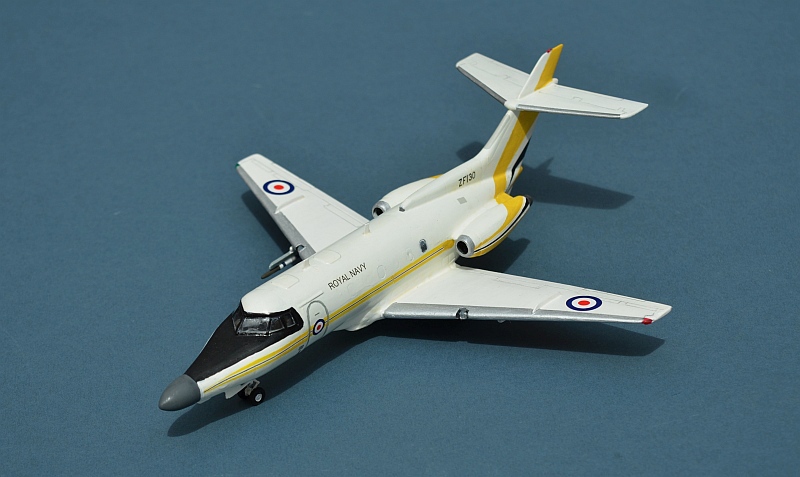
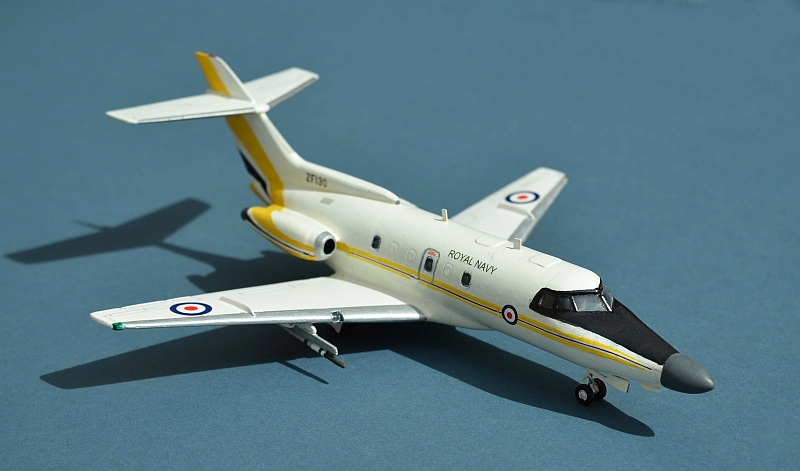
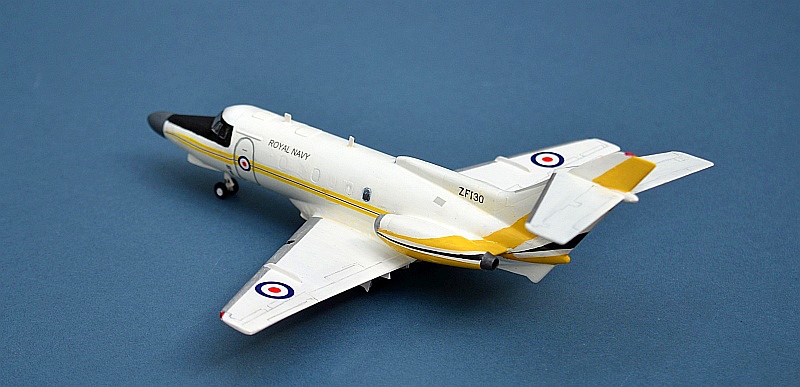
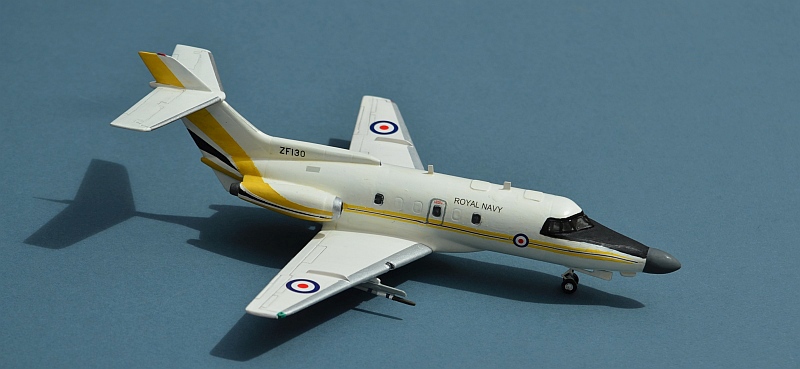
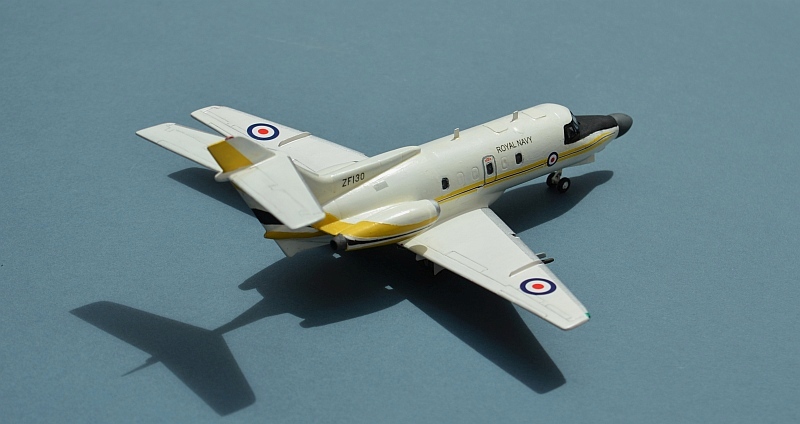
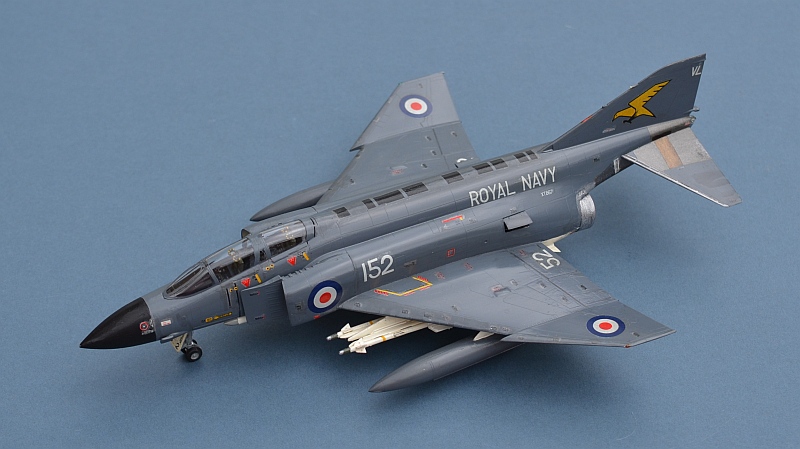
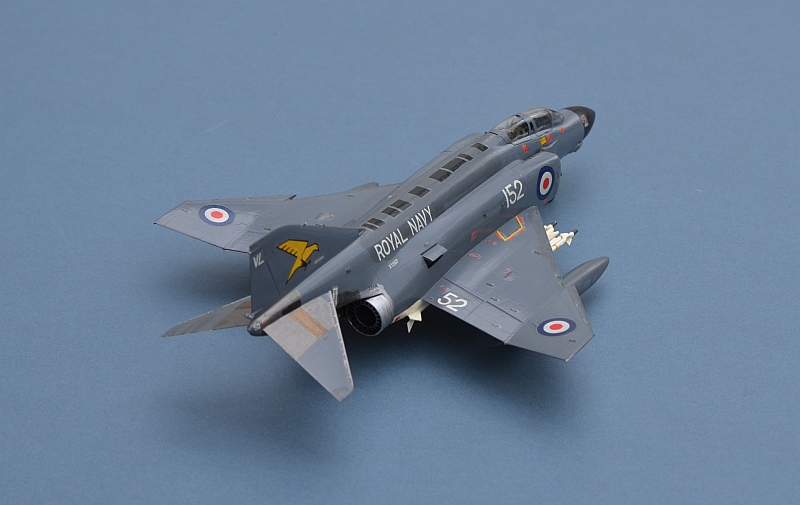
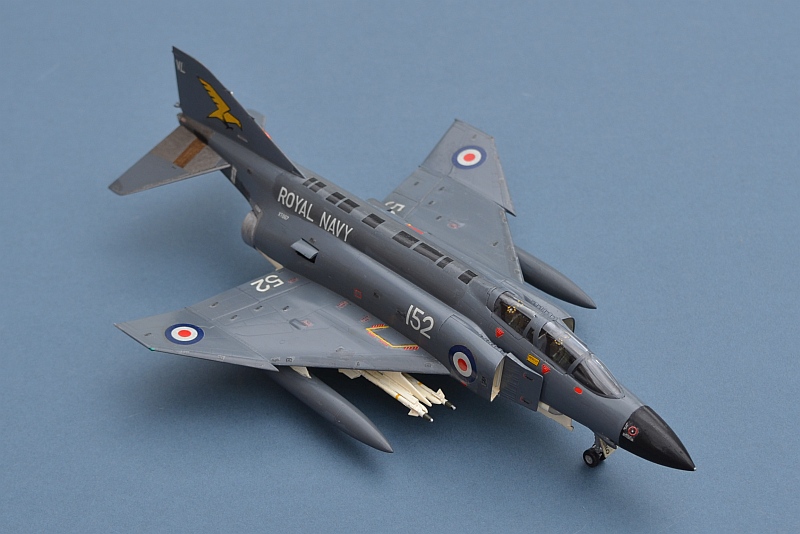
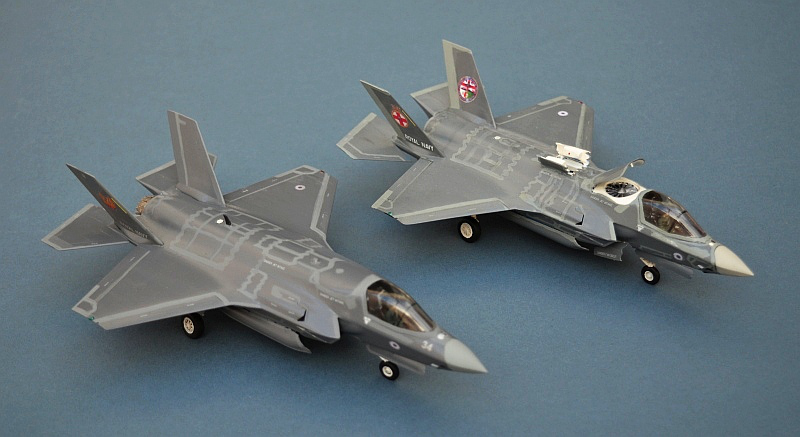
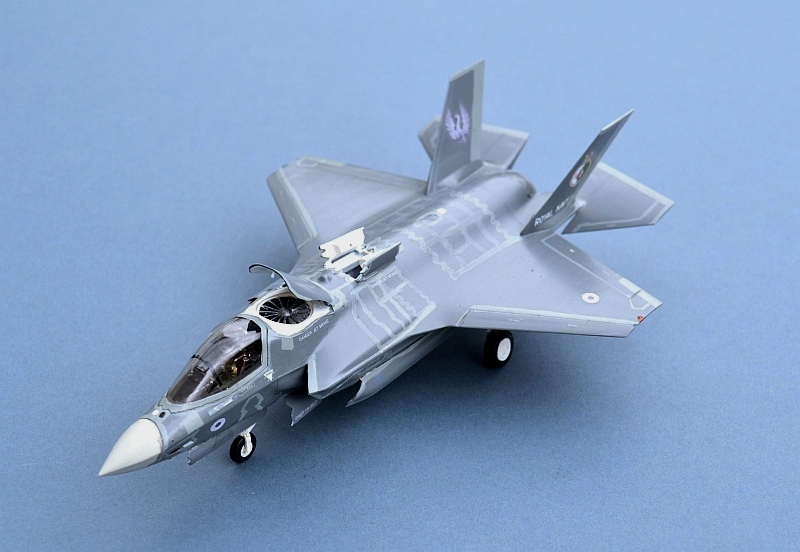
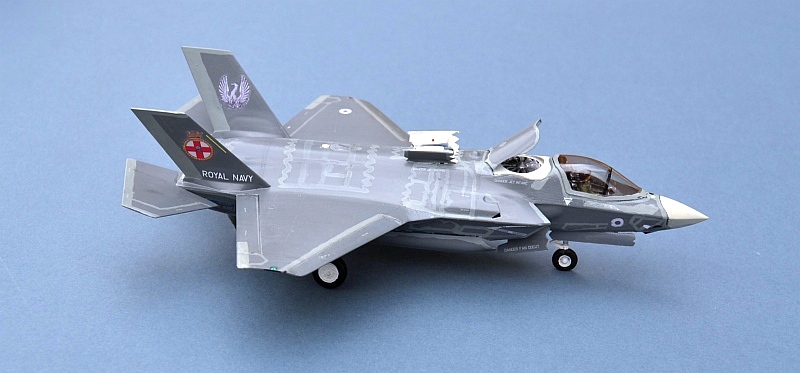
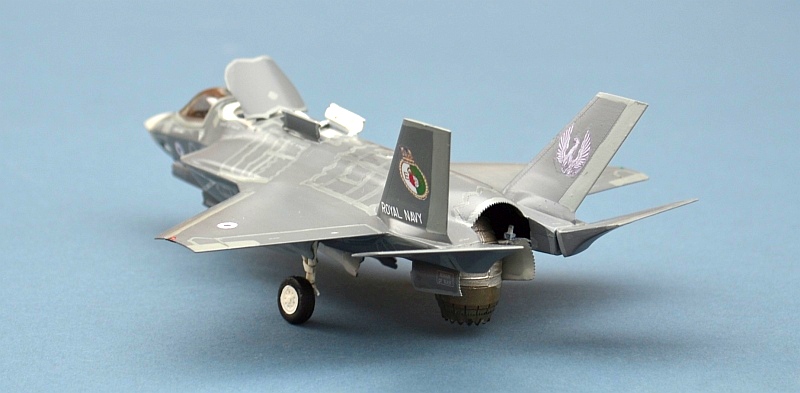
This is the Phabulous Phujimi (Fujimi) British F-
892 NAS were the only front-
This aircraft bears the special Silver Jubilee markings applied for the Flee Review at Spithead. Sadly, poor weather prevented the flypast, but a modified form of the marking, with the “77” replaced by the Sqn crest was worn until the aircraft left RN service.
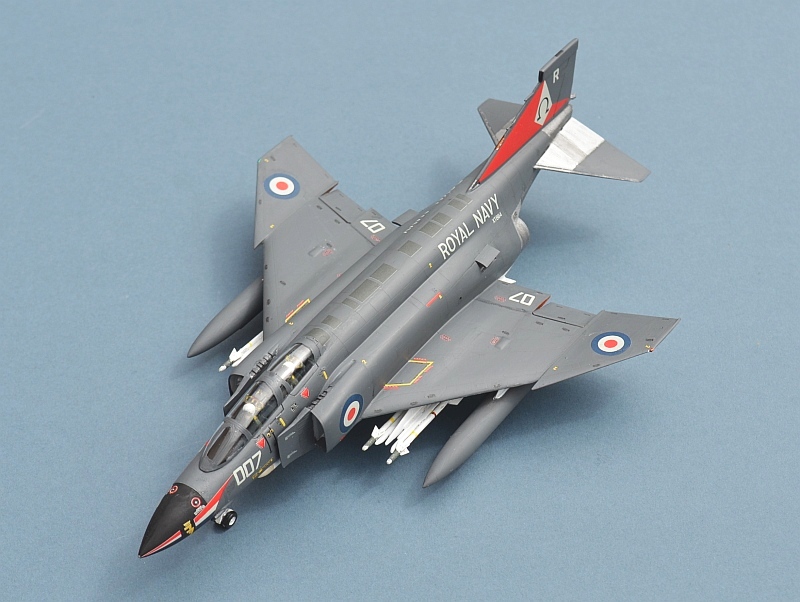
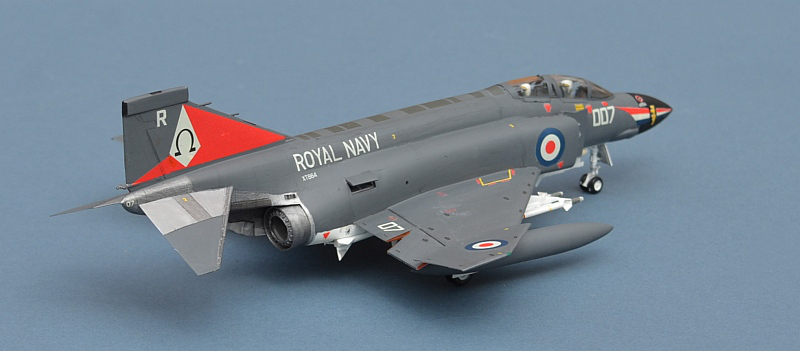
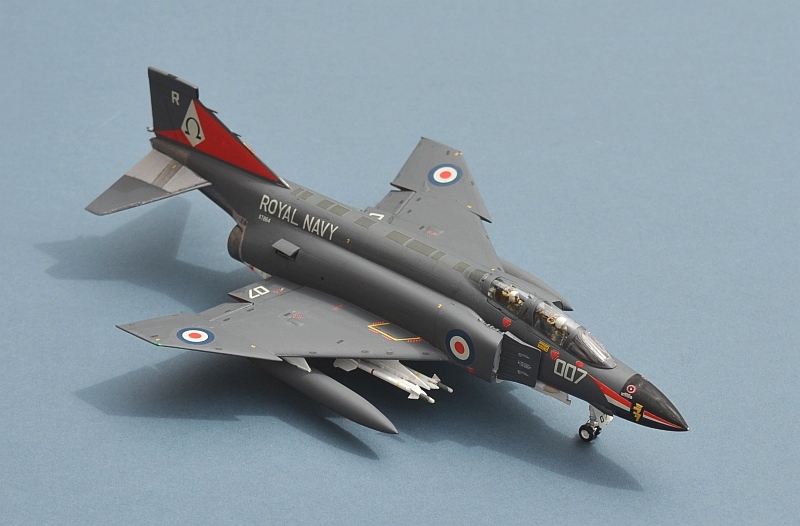
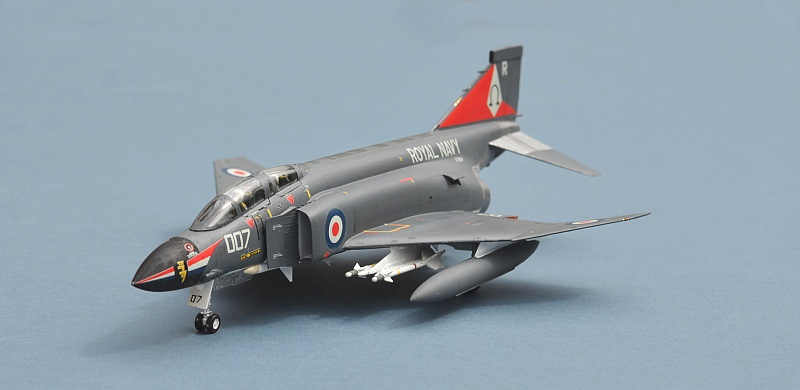
Another FROG Buccaneer, this time with Xtradecal markings for an aircraft of 801 Sqn onboard HMS HERMES. (Link to build Page)
